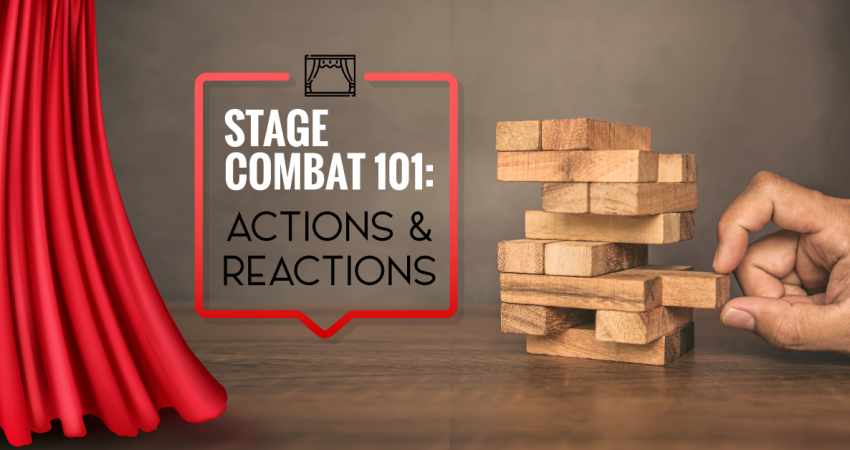Stage fighting is more than just memorizing choreography and learning proper technique. Yes, they are extremely important to ensure that the stage fight is executed safely and correctly. But remember, stage combat is a form of storytelling. The fights must continue the story the actors are telling through their lines and stage. And what makes a fight look even better are the performers’ actions and reactions to the fight. If a character resorts to violence, it is obvious that they are feeling strong emotions. Students need to know exactly how the fight affects their character physically and mentally, how the fight tells the story, and how they will portray those feelings.
Physical actions and reactions include:
- Sounds and vocalizations (exclamations of pain, aggression or fear, grunts, moans, groans, screams)
- Body language (clenched fists, motioning for someone to “bring it”, hands outstretched)
- Posture (standing, crouched, bent over in pain, martial arts poses)
- Facial expressions (avoid hiding your face – students often want to hide or cover their faces when trying to portray fear or sadness)
- Pre-battle and post-battle moves
- Breathing (taking in air, barely straining)
- Changes during the fight (showing pain after getting hit, getting hurt)
Mental actions and reactions include:
- Why is your character fighting?
- How skilled or unskilled is your character in combat?
- Does your character want to fight or doesn’t want to fight?
- What was your character doing right before the fight?
- What will your character do after the battle?
- How does combat affect your mental character? (Are they angry, vengeful, scared, traumatized, unconscious?)
- How does the fight affect the action of the show as a whole?
It’s a lot to think about, isn’t it? Students are probably familiar with creating a character profile when they start to know their role. It’s helpful for students to complete a fight analysis (you’ll find a free worksheet below) when participating in staged combat. This will give students a deeper understanding of the fight itself, their character’s role in the fight, and the purpose of the fight within the larger context of the show.
At the show, once the students have learned their choreography and can perform it correctly, they can add all these extra layers. Remember to portray the pain of their exit and the following scenes. (A pet peeve of mine is when actors act out an incredible fight with tons of bumps and bruises… and then walk away like they’re perfectly fine afterward – not even out of breath!)
You can use the wrestling analysis worksheet in class if you are studying a show with wrestling in it, such as Romeo & Juliet or Hamlet. Students can compare and contrast how they think different characters would act and react in fights. It is also interesting to consider how different students might imagine the same character reacting in a fight. One student might imagine Tybalt screaming and yelling as he leaps and holds his flowery sword, while another student might imagine Tybalt whispering the lines and attacking silently, like a snake.
You can also use the worksheet to practice analyzing famous movie fights, such as Inigo Montoya vs. the Man in Black in The princess bride or Captain Jack Sparrow vs. Will Turner Pirates of the Caribbean: The Curse of the Black Pearl. Have half the class observe one character and half the class observe the other and create an analysis of the fight based on what they see. For an extra challenge, ask your students what would change if they tried to do those fights live on stage instead of on film.
Click here for a free fight analysis worksheet.
Kerry Hishon is a director, actor, writer and stage fighter from London, Ontario, Canada. She blogs at www.kerryhishon.com.
Want to learn more about our newest pieces, resources, and giveaways?
Get on our list!

